25 U.S. Cities That Used to Be State Capitals

Though we may not like to admit it, some of us would have a tough time naming all the U.S. state capitals correctly. Wait, Philadelphia isn’t the capital of Pennsylvania? Nope! It’s actually Harrisburg. But if you were under the impression that it was Philly, don’t stress, you aren’t entirely incorrect—at one point it was. In fact, many state capitals have shifted around multiple times over the years, so it’s easy to lose track. To help clear things up, we’ve rounded up 25 U.S. cities that are former state capitals.
1
Detroit, Michigan

Though it’s not the current home to Michigan’s capitol building, Detroit was, in fact, the first capital city of the mitten-shaped state. That was the case from 1828 until 1847, at which point it was moved to Lansing. The reason behind the decision being that Detroit was too close to the border of “hostile Canadians,” who were still a threat from the War of 1812.
2
Savannah, Georgia
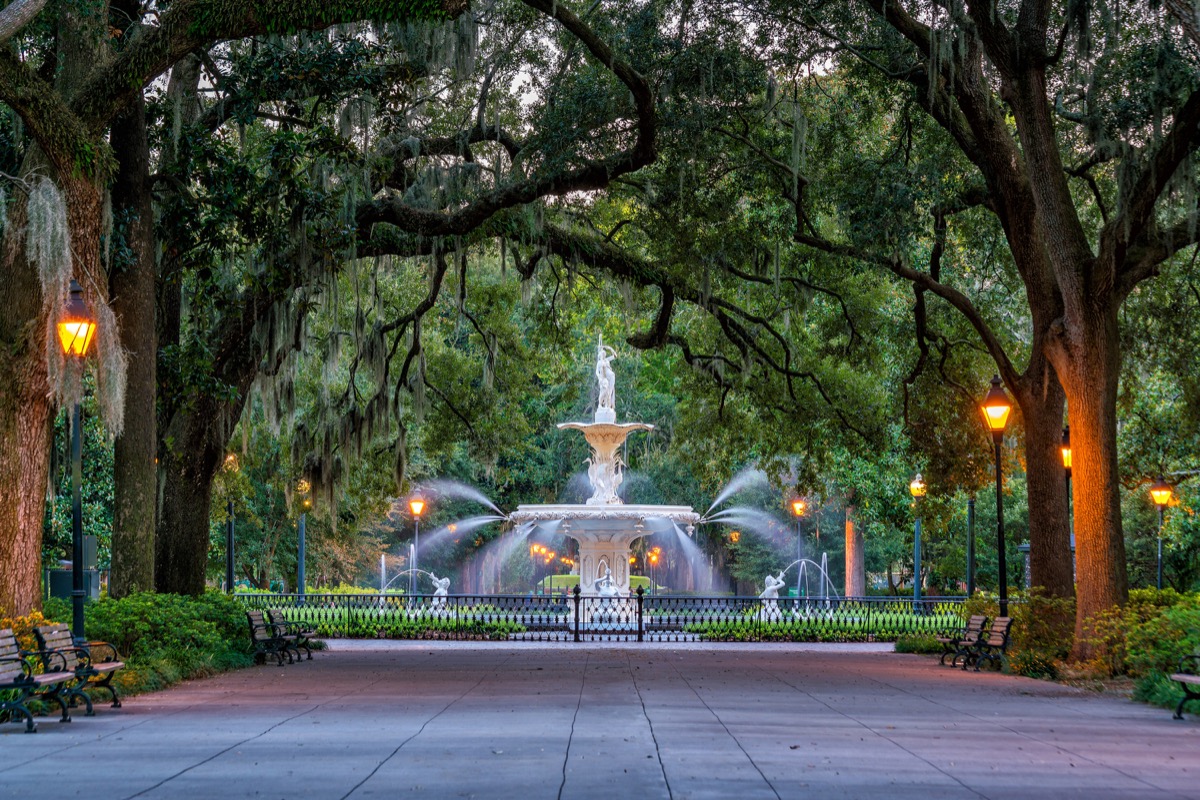
These days, Georgia’s capitol building is sitting snug in Atlanta, the state’s most populous city. However, that wasn’t always the case. In fact, Savannah—the oldest city in the state—served as the state’s first capital and carried that title on and off between 1777 and 1796. During this time, growing tensions between the people of coastal and upland Georgia caused the capital to rotate regularly between Augusta and Savannah.
3
New Orleans, Louisiana

It wouldn’t be illogical to assume New Orleans is the capital of Louisiana—after all, it’s arguably the state’s most popular city. However, while that may not be correct now—the current capital is Baton Rouge—it was at one point in history. After a famine struck then-capital Biloxi—killing thousands of residents—the state capital was moved to New Orleans in 1722, where it remained until 1825. After changing destinations a handful of times, New Orleans was once again named the capital in 1864, but it was ultimately moved to Baton Rouge in 1879.
4
Shreveport, Louisiana

Following New Orleans’ tenure, Shreveport served as Louisiana’s capital during the Civil War, from 1863 to the end of the war. It moved here after Louisiana’s previous capital, Baton Rouge, was taken over by Union troops, and served as such until the last major Confederate force surrendered in Shreveport in 1865.
5
Charleston, South Carolina
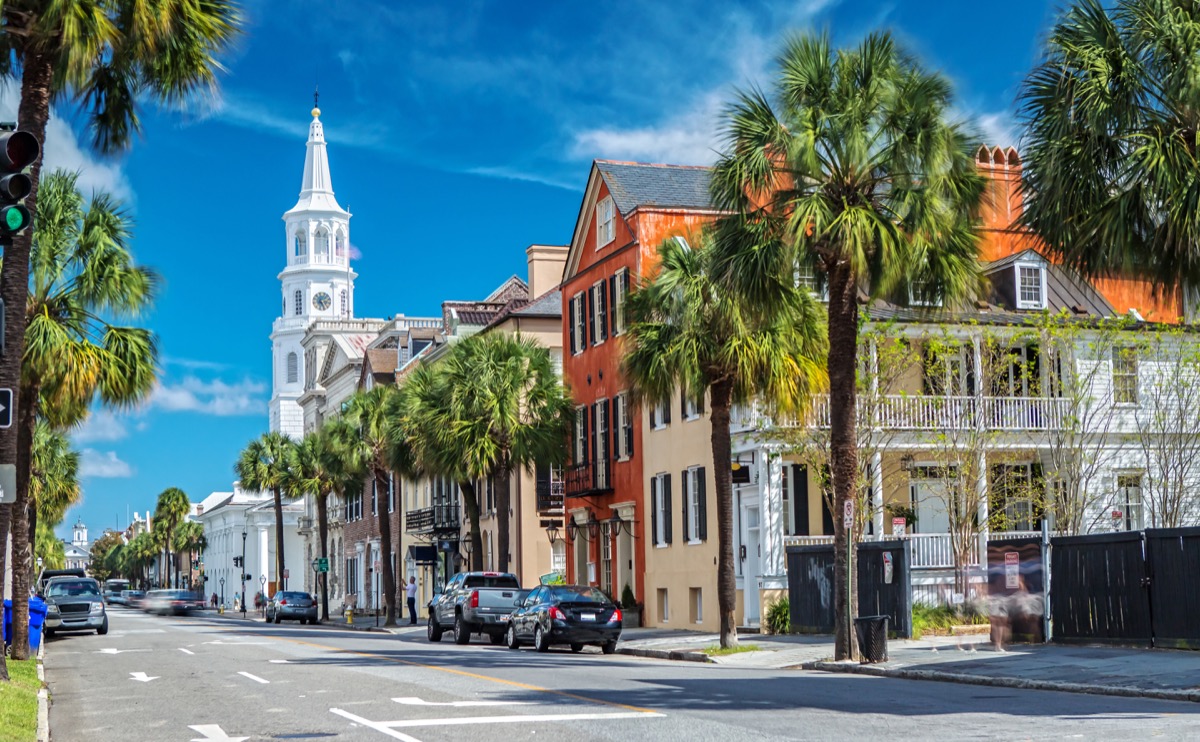
Many people visit the state of South Carolina for the historic and charming city of Charleston—thus assuming that it’s the state capital, when that honor actually belongs to Columbia. However, in 1756—during the first meeting of the South Carolina Assembly—Charleston was in fact the capital. But, in 1786, a vote decided Columbia would assume that position due to its more centralized location within the state.
6
San Francisco, California

California is, well, a very large state—so it’s no surprise that it has had many different capitals throughout the years. And in the case of the ever-evolving city of San Francisco, being designated the state capital was a result of extreme weather. When heavy rains struck the Sacramento River in the early 1860s, California was forced to move their legislature from Sacramento to the Merchants’ Exchange Building in San Francisco. However, after the 1862 session was over and Sacramento had recovered from the rains, the city reclaimed its title as California’s capital.
7
San Jose, California

Before San Francisco or Sacramento, when California gained statehood in 1850, San Jose was incorporated as the state’s first capital, as it was where the legislature had met the year prior. But because of a lack of suitable housing facilities, it didn’t remain as such for long. In fact, within a year, Vallejo was temporarily named the new capital of California.
8
Portland, Maine

When Maine separated from Massachusetts and became its own state in 1820, Portland was deemed the temporary capital city. Even though Portland is the state’s most populous city, many people wanted the capital to be more centralized. So in 1827, the legislature moved the capital to Augusta, and it’s remained there since, despite Portland’s best efforts to get it back.
9
Philadelphia, Pennsylvania

Not only is Philadelphia one of the largest cities in the U.S., it was once our nation’s capital. Yet, it hasn’t been the state’s capital since 1799, when the Pennsylvania General Assembly moved to Lancaster, a far more rural location. From 1799 to 1812, Lancaster served as the state capital before Harrisburg was named the permanent place of residence. And fun fact, Lancaster also served a stint as the nation’s capital—for one day, at least.
10
Iowa City, Iowa

Iowa City would seem like the practical choice for the capital city of Iowa—after all, it literally bears the state’s name. But, it was only the capital all the way back in the 1800s. In 1847, Iowa City was named the state capital, as it had been during Iowa’s reign as a territory. And while the Iowa General Assembly voted to move the capital to the more centralized Des Moines—the current capital—in 1857, the old capitol building can still be seen in Iowa City, currently being used as a museum.
11
Kaskaskia, Illinois

Illinois’ first capital is quite a unique one, seeing as it’s now an island with few residents. Kaskaskia became the state capital in 1818, when Illinois was first admitted to the union. But, just two years later, in 1820, a new capitol building was erected in Vandalia. In 1837, however, the decision was made to make Springfield the third, and current, capital of Illinois.
What happened to Kaskaskia? After the Mississippi River broke a new path, the town was severed from the rest of the state where it has remained isolated for more than 135 years.
12
Windsor, Vermont

When Vermont became an official state in 1791, Windsor was dubbed the capital as it was known as the “Birthplace of Vermont,” where the state constitution was framed and signed. However, in 1805, the state moved its capital to the more centralized Montpelier, where it is still located today.
13
New Haven, Connecticut

For awhile, New Haven and Hartford acted as Connecticut’s co-capitals–a decision proposed all the way back in 1701. The Connecticut General Assembly rotated where it conducted business between the two locations until 1875. Around this time, the state questioned the “financial ramifications” of maintaining two separate capitals and held a public vote for which city deserved the title. Unfortunately for New Haven, that vote went in Hartford’s favor.
14
Newport, Rhode Island

Rhode Island had five co-capital cities in the 1800s, the town of Newport being one of them. However, in 1854, the state assembly minimized its rotation cycle to just two cities: Newport and Providence. And then, in 1900, Providence became the sole capital city.
15
Huntsville, Alabama

These days, Alabama’s capital is in the centrally located city of Montgomery. But when it was admitted to the union in 1819, Alabama’s capital was situated farther north, near the Tennessee border, in the city of Huntsville. This is where the first Constitutional Convention of Alabama was held. However, Hunstville could only call itself the capital for a year before it was moved to the city of Cahaba and eventually, in 1846, Montgomery.
16
Kingston, Tennessee

Kingston, Tennessee, had a special tenure as the state’s capital—for one day, that is. One of the Cherokees’ terms in the Tellico Treaty of 1805 was that the capital be moved to Kingston, and the state agreed to the treaty. However, the Cherokees failed to specify how long Kingston had to be the capital. So, on September 21, 1807, the legislature met in the city for a few hours, making it the capital for exactly one day before returning the title to Knoxville.
17
Zanesville, Ohio

Many people know that Columbus is the capital of Ohio. But before Columbus, there was Zanesville. This city—located about 50 miles east of the current capital—replaced Chillicothe as Ohio’s capital in 1810 as a way to solidify political control over eastern Ohio. However, the efforts were short lived as the capital returned to Chillicothe just two years later.
18
Wheeling, West Virginia

Wheeling served as the first capital of West Virginia when it achieved statehood in 1863. Then, it played a game of cat-and-mouse with Charleston, which was given the title in 1870. It stayed there for five years, but then moved back to Wheeling for ten years. And finally, in 1885, Charleston was named the permanent capital of West Virginia.
19
Guthrie, Oklahoma

Guthrie was the first capital of Oklahoma, from 1907 to 1910. However, the city had a long battle with nearby rival, Oklahoma City. And even though Guthrie was supposed to remain as the capital until 1913, a majority vote in 1910 from the citizens of Oklahoma chose Oklahoma City as the new location for the state’s government.
20
Washington, Arkansas
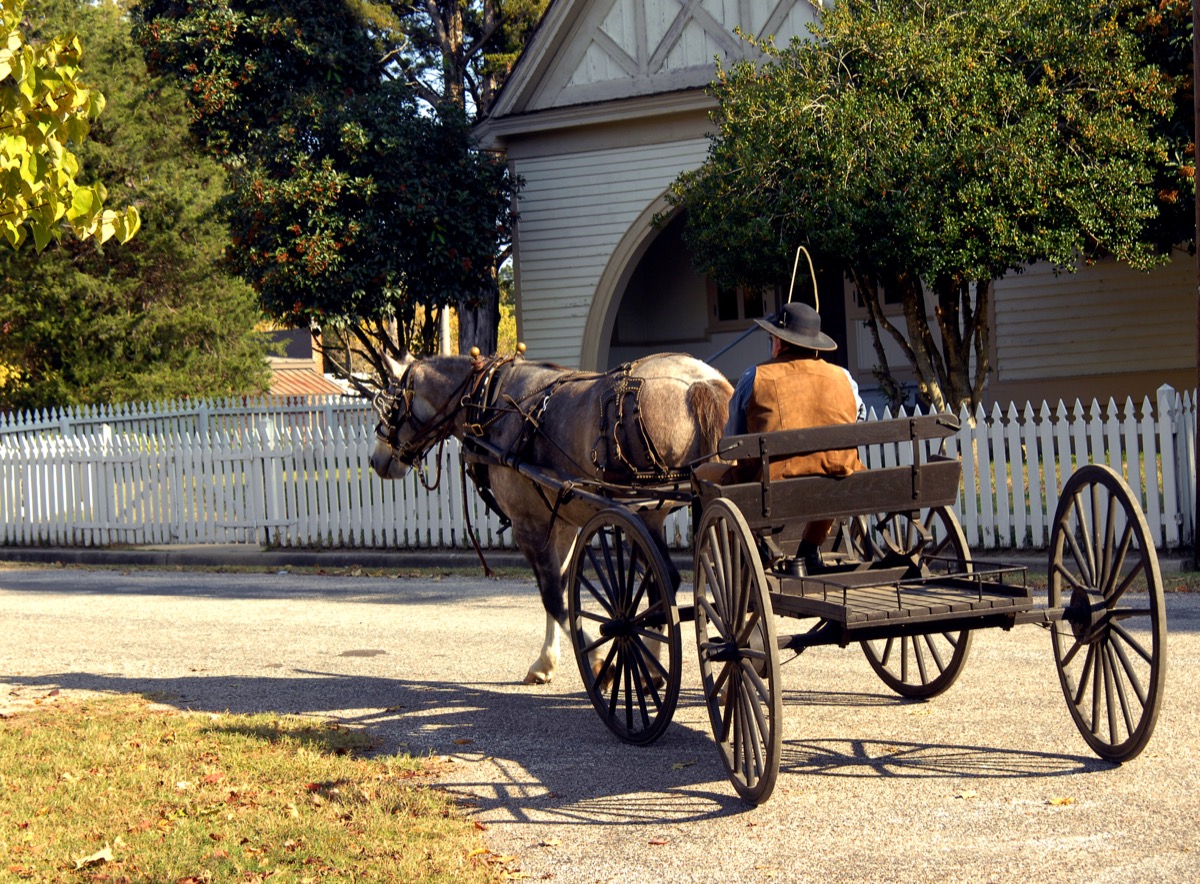
During the Civil War, Union troops had gained control of Little Rock—the previous, and current, capital—so the Arkansas confederate government was forced to relocate to Washington for a year before returning to Little Rock in 1865.
21
New Bern, North Carolina

New Bern served as the capital of colonial North Carolina beginning in 1746 and remained so when the territory became a state in 1789. But during the Revolutionary War, New Bern’s waterfront location made the state vulnerable, so it wasn’t exactly the only capital used. In fact, the legislature rotated business through various locations during this time to “elude” the enemy, and they knew they had to eventually pick a new home. So, in 1792, New Bern’s “reign” ended, and the title of capital was given to its permanent home, the city of Raleigh.
22
Saint Charles, Missouri
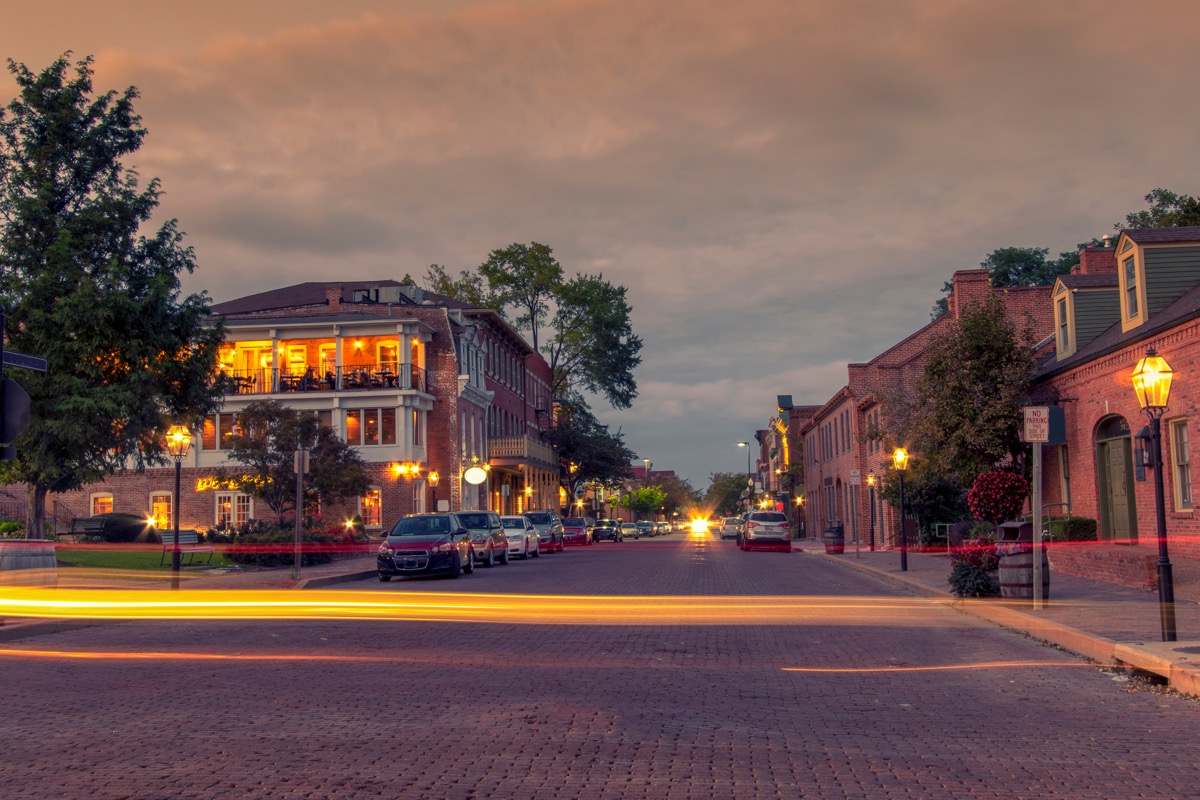
Unfortunately, the popular city of St. Louis was never the capital of Missouri but another “saint” city was: St. Charles! This town was actually the state’s first capital and served as such from 1821 to 1826. However, since this city was located all the way on the eastern border of the state—next to Illinois—Missouri was busy planning and building a more permanent capital in more central Jefferson City.
23
Corydon, Indiana

When Indiana was admitted as the 19th state in 1816, Corydon was the state capital, as it had been the territorial capital the year prior and was in close proximity to the Ohio River. And Corydon had actually taken the capital from Vincennes, Indiana’s first territorial capital, in 1813. But, as much more of the state had been settled by 1820, legislators sought a different location for its center of government. So in 1825, they moved to central Indianapolis, the state’s current capital.
24
New Castle, Delaware
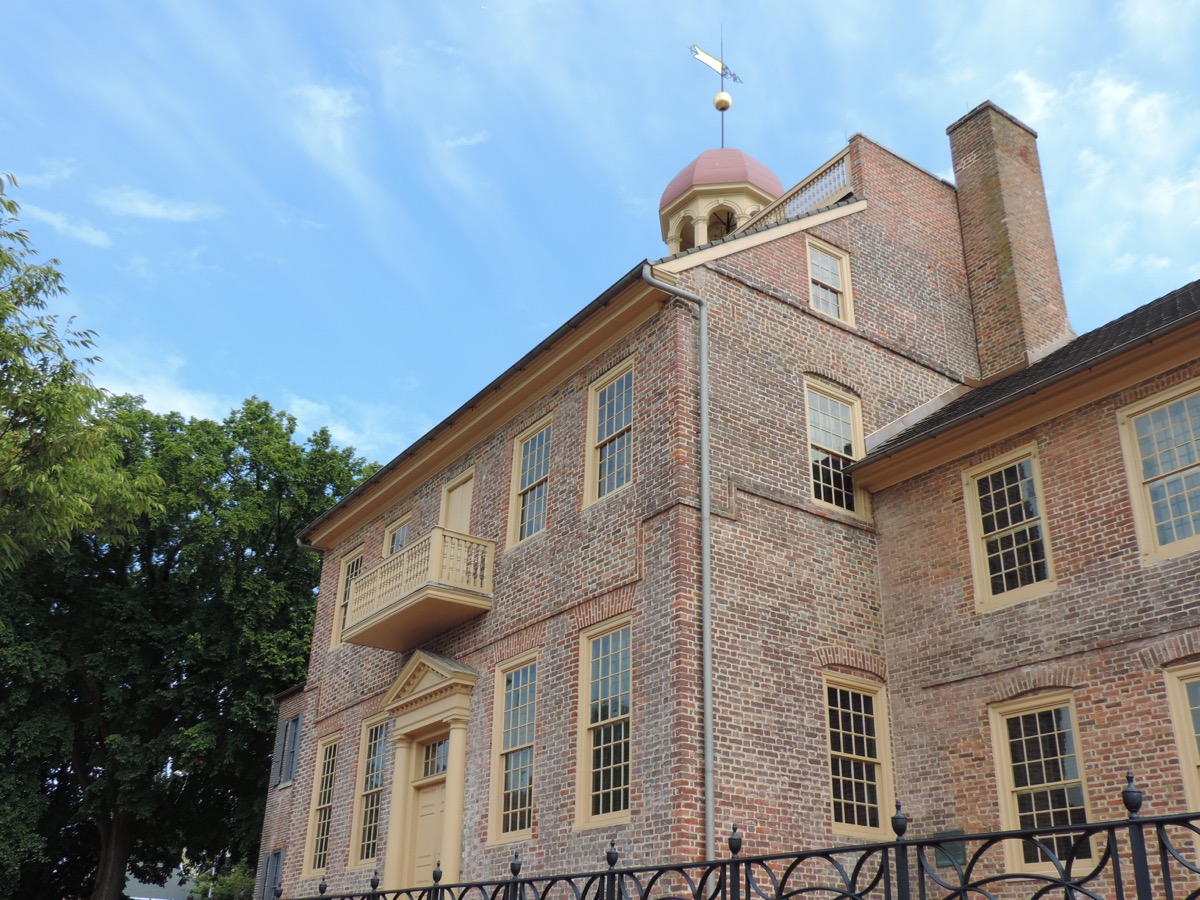
Delaware may be one of the smallest states in the nation, but even they’ve moved their capital around. The town of New Castle had served as capital of the territory, so when Delaware achieved statehood in 1776, it became the state capital. However, that only lasted a year. Through the threat of a British invasion, as New Castle was situated right on the large Delaware River, they moved the capitol building to Dover, where it remains today.
25
Williamsburg, Virginia

Jamestown, the first permanent English settlement in America, was the original capital of the Virginia Colony, but the title was given to Williamsburg in 1699. However, just one year after Virginia gained statehood, the capital city was changed to the more central location of Richmond, where is remains today.